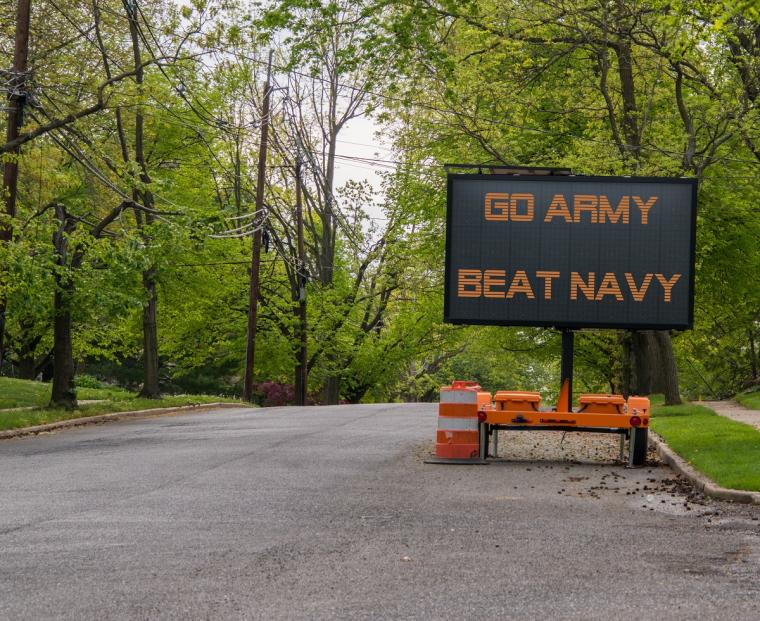
Statistically speaking, Navy has come out the winner in the storied Army/Navy football game (Navy has won 62 times and Army has won 53 times – with seven ties) but overall, the biggest winner is the host city.
How big a winner? Well, according to the Capital Gazette, when the game came to Philadelphia, it brought in 50,000 out-of-town visitors who used 25,000 hotel rooms, ate meals, visited the city, shopped in stores, went sightseeing and overall, pumped a total of $30 million into the regional economy. (The game will be played again in Philly on December 10, 2022).
And that is why the most recent announcement of the game locations made major news.
 The Gazette notes that the annual football game between the U.S. Naval Academy and the U.S. Military Academy will be played in five different markets in the Northeast between the 2023 and 2027 seasons; those destinations are as follows:
The Gazette notes that the annual football game between the U.S. Naval Academy and the U.S. Military Academy will be played in five different markets in the Northeast between the 2023 and 2027 seasons; those destinations are as follows:
2023: Gillette Stadium – Organizers note this will be the 250th anniversary of the Boston Tea Party (and the 225th anniversary of the USS Constitution).
2024: FedEx Field (located in Maryland but the home field of the Washington Commanders; Events DC is involved with the marketing and planning for this game)
2025: M&T Bank Stadium in Baltimore, home field of the Baltimore Ravens
2026: MetLife Stadium in New York – Organizers note this will be the year of the 25th anniversary of 9/11 on Dec. 12, 2026.
2027: Lincoln Financial Field in Philadelphia (the game was supposed to be played there in 2020 but because of the pandemic, it was moved to West Point – to the disappointment of the city, regular spectators – and both academies, who would have each gotten a share of the ticket sales).
One reason for the economic impact of the Army/Navy game is the scope of the festivities and activations surrounding it. Events DC, for example, has noted it will host a number of signature events in the days leading into the 2024 game including the Army-Navy Gala, the Patriot Games showcasing the Cadets versus the Midshipmen and, unique to the District, the Army-Navy Block Party on The Wharf.
The rivalry has been going on since 1890. The U.S. Army website points out that at the time of that first game, Navy had been playing organized football since 1879 and defeated the newly established Army team, 24-0.
Ouch. But here’s a much more fun fact from the website: The 271 members of the Corps of Cadets each contributed 52 cents to pay half of the Navy's traveling costs for the 1890 game.
And over the years, there have been a few times the game was not played. World War I, for example, interfered in 1917 and 1918. (Oddly, says the website, the longest interruption, which lasted from 1894 to 1898, came about after an argument between an Army general and a Navy admiral almost resulted in a duel following the 1893 game).
But all games have had their shares of pageantry, pomp – and pranks. For this reason, there is “above top secret” security around Navy’s mascot, Bill The Goat.
History tells us that in 1893, a live goat named El Cid (The Chief) made his debut as a mascot at the Army-Navy game. Navy won that game. Starting in the early 1900s, Navy started naming the goats Bill. The first theft of Bill the Goat happened in 1953, with West Point cadets putting Bill in the back of a convertible. As recently as 2012, someone stole Bill the Goat ahead of the Army-Navy game and Bill was tied to a median near the Pentagon. The Air Force and Maryland also have gotten the Navy's goats over the years.
Oh, and speaking of the Air Force, that venerable academy also has its own team as well. They, and the Army and Navy, compete for the Commander-in-Chief's Trophy which is awarded to the academy that defeats the others in football that year (or retained by the previous winner in the event of a three–way tie). Air Force has a 27-sport intercollegiate program, plus physical education, and intramurals.
In case you’re wondering (we know you are), the U.S. Marines do not currently have a football team. The Quantico Marines Devil Dogs football team represented the Quantico Marine Base, playing 51 seasons between 1919 and 1972.
Because playing military teams playing one another (or even one military team playing a regular Division I school) are big draws for spectators, games are heavily promoted, much anticipated and well attended. And new games are big news. For example, the Colorado College Tigers and Air Force Falcons women's soccer teams will take the field and contend in the inaugural City for Champions Cup at Weidner Field. The match is set to take place on Thursday, Oct. 27, 2022.
The match, according to KOAA News in Southern Colorado, is a natural link with the 50th anniversary of Title IX, and is an excellent opportunity to “showcase our two Division I and Mountain West women's collegiate women's soccer programs in the Springs," Lesley Irvine, Colorado College vice president & director of athletics said.

